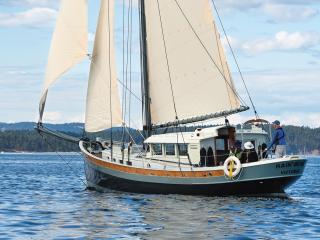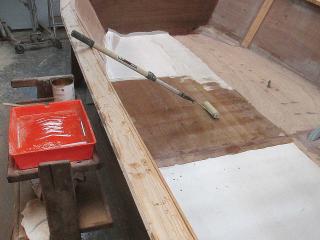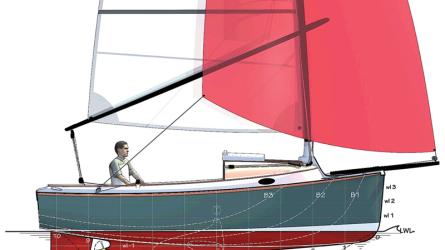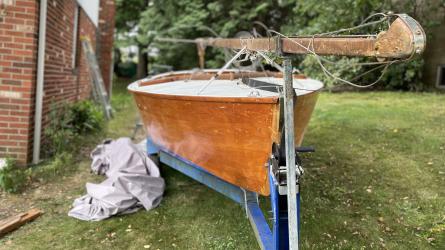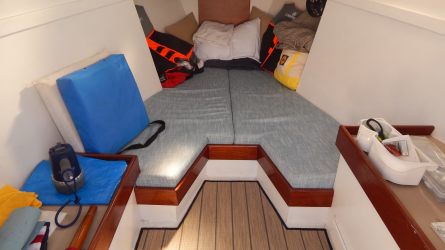November / December 2021
The “Yankee Sloop”
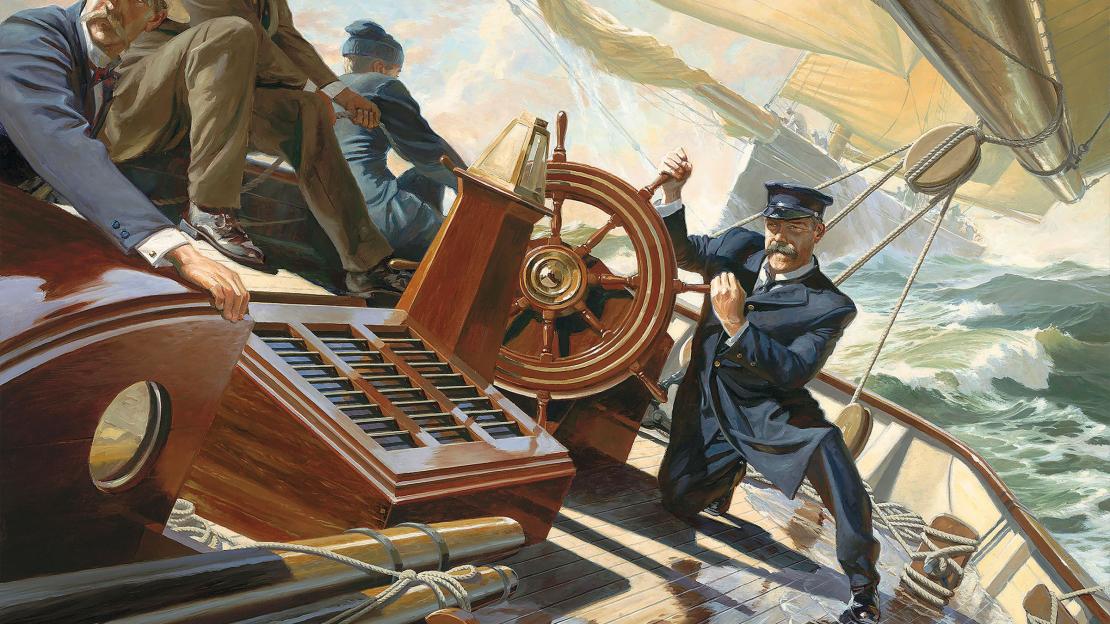
How might it have been aboard PURITAN when she was closely pressed by GENESTA? Artist Russ Kramer depicts Gen. Charles Paine staring intently ahead while an Eastern Yacht Club crewman assists one of PURITAN’s professionals on the mainsheet and Capt. Aubrey Crocker steers the yacht.
On a cold, gray day in December 1884, the New York Yacht Club received a letter from the 35-year-old Irish-born naval architect John Beavor-Webb, who announced that two yachts of his design intended to challenge for the AMERICA’s Cup. The first challenger would be the cutter GENESTA, owned by Sir Richard Sutton, a baronet, sportsman, and member of the Royal Yacht Squadron (RYS). Should GENESTA fail, Lt. William Henn and his wife, Susan, owners of GALATEA, would then try.
Beavor-Webb’s letter prompted a nine-month period that would pit GENESTA against an American yacht that, in December 1884, didn’t even exist. That vessel, PURITAN, would in due course be recognized as the fastest American yacht yet built. What’s more, at a time when the first iron yachts had appeared along with “composite” hulls of steel framework and wooden planking, PURITAN would be the last AMERICA’s Cup defender built entirely of wood until COLUMBIA in 1958.
The Background
In 1857, six years after the schooner AMERICA won what was known in English yachting as the RYS 100 Pound Cup for its value in that country’s currency, the trophy—renamed the AMERICA’s Cup—was donated by its owners to the New York Yacht Club of which they were members. Thirteen years later, on August 8, 1870, the first effort to recapture the Cup was made. The yachting writer J.D. Jerrold Kelley presented the situation: “[T]he fair fame of the country was at stake, and all classes of our citizens were assembled to greet the foreign yacht which had pluckily sailed 3,000 miles of stormy sea to redeem a national defeat.”
To read the rest of this article:
Click the button below to log into your Digital Issue Access account.
No digital access? Subscribe or upgrade to a WoodenBoat Digital Subscription and finish reading this article as well as every article we have published for the past 50-years.
ACCESS TO EXPERIENCE
2-for-1 Print & Digital Subscription Offer
For this holiday season, WoodenBoat is offering our best buy one, get one deal ever. Subscribe with a print & digital subscription for $42.95, and we’ll give you a FREE GIFT SUBSCRIPTION to share with someone special.
1 YEAR SUBSCRIPTION (6 ISSUES)
PLUS ACCESS TO MORE THAN 300 DIGITAL BACK ISSUES
PRINT+DIGITAL $42.95
Subscribe
To read articles from previous issues, you can purchase the issue at The WoodenBoat Store link below.
 Purchase this issue from
Purchase this issue from


